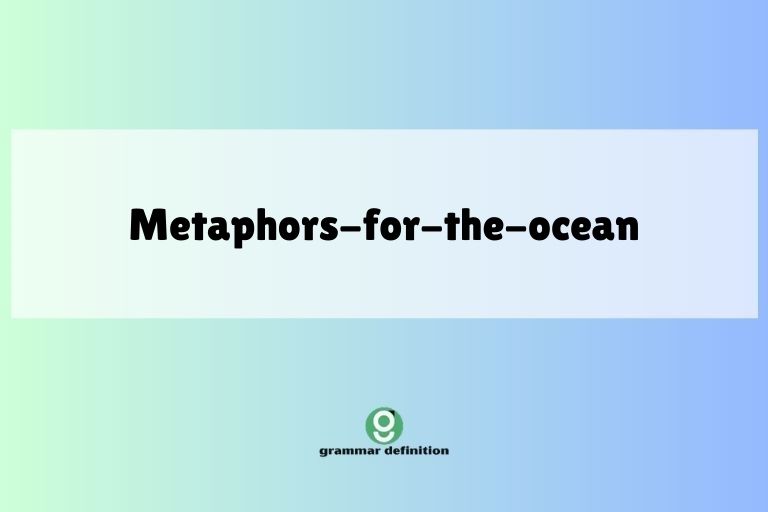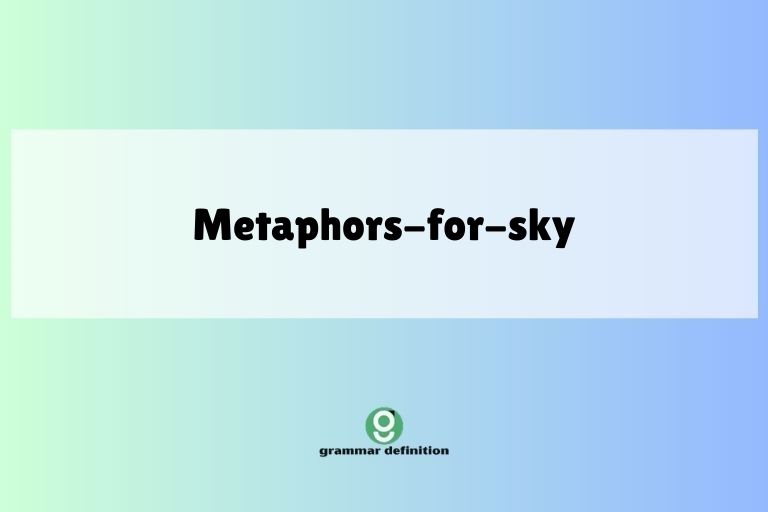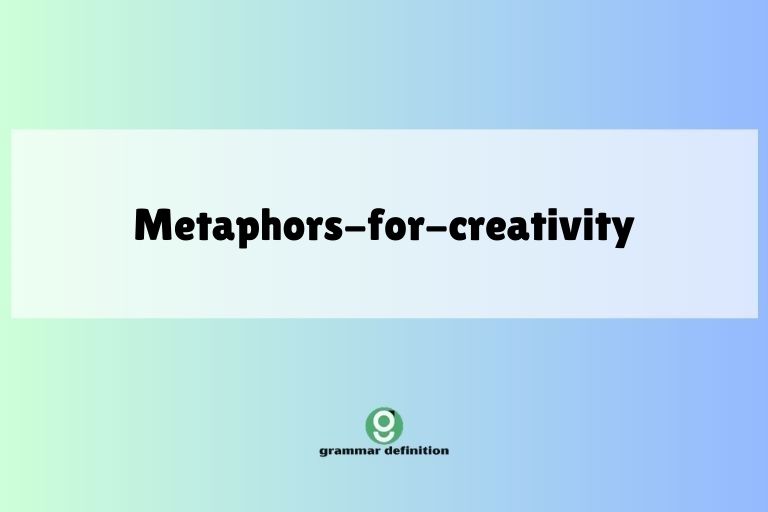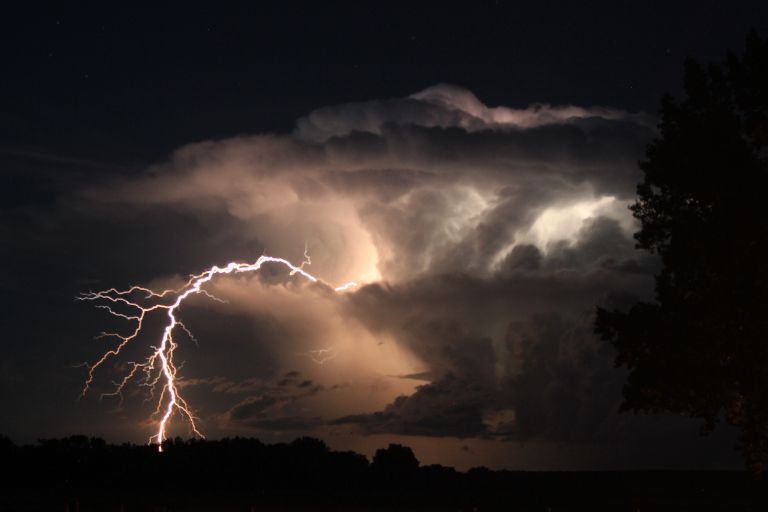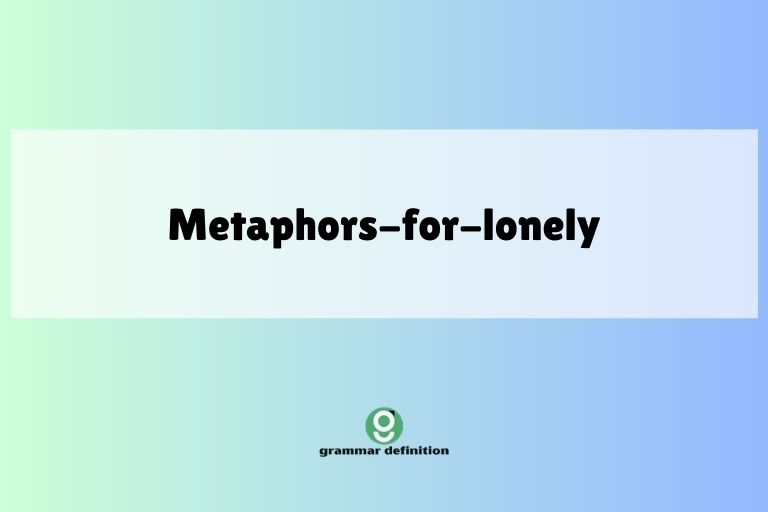Summer’s Embrace: Mastering Metaphors for the Sun-Kissed Season
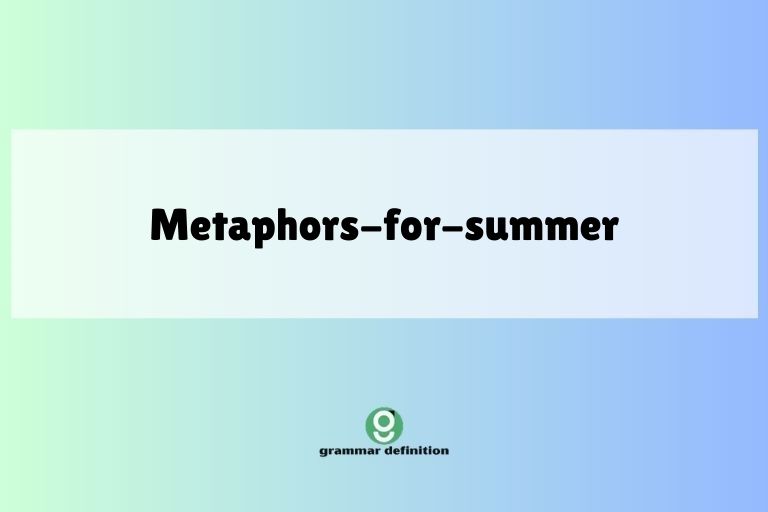
Summer, with its vibrant hues, warm breezes, and long, sun-drenched days, is a season ripe with metaphorical potential. Understanding how to use metaphors to describe summer not only enriches your writing and speaking but also deepens your appreciation for the English language.
This article will guide you through the art of crafting vivid and evocative metaphors for summer, enhancing your ability to express the essence of this beloved season. Whether you’re a student, writer, or simply an English enthusiast, this comprehensive guide will equip you with the knowledge and tools to master summer metaphors.
This exploration into summer metaphors is beneficial for anyone looking to improve their understanding of figurative language, enhance their creative writing skills, or simply express their love for summer in a more evocative way. By the end of this article, you’ll be able to identify, analyze, and create your own captivating metaphors that capture the spirit of summer.
Table of Contents
- Introduction
- Defining Metaphors
- Structural Breakdown of Metaphors
- Types of Summer Metaphors
- Examples of Summer Metaphors
- Usage Rules for Summer Metaphors
- Common Mistakes with Summer Metaphors
- Practice Exercises
- Advanced Topics in Metaphor Usage
- Frequently Asked Questions
- Conclusion
Defining Metaphors
A metaphor is a figure of speech that directly compares two unrelated things, asserting that one thing is another. Unlike similes, which use “like” or “as” to make a comparison, metaphors create a more implicit and imaginative connection. Metaphors are essential tools for writers and speakers to convey complex ideas, evoke emotions, and paint vivid pictures in the minds of their audience. They add depth and richness to language, transforming ordinary descriptions into memorable expressions.
Metaphors are fundamental to how we understand and communicate abstract concepts. By relating the unfamiliar to the familiar, they bridge gaps in understanding and make complex ideas more accessible.
For example, saying “summer is a golden dream” helps us understand the feeling of warmth, relaxation, and joy associated with summer by linking it to the comforting image of a golden dream.
Metaphor Classification
Metaphors can be classified in various ways, based on their structure, function, and how explicitly they make the comparison. Here are some common classifications:
- Standard Metaphors: These are the most common type, directly stating a comparison (e.g., “Summer is a furnace.”).
- Implied Metaphors: These metaphors suggest the comparison without explicitly stating it (e.g., “The sun blazed down, roasting the earth.” – here, the sun is implied to be a cooker).
- Mixed Metaphors: These combine two or more inconsistent metaphors, often unintentionally creating a humorous or confusing effect (e.g., “Let’s nip this in the bud before it snowballs out of control.”).
- Extended Metaphors: These metaphors are developed over several lines or even an entire piece of writing, elaborating on the initial comparison (e.g., a poem where summer is consistently portrayed as a nurturing mother).
- Dead Metaphors: These are metaphors that have become so common that they are no longer recognized as figurative language (e.g., “the heart of the matter”).
Understanding these classifications helps in analyzing and creating effective metaphors, ensuring that your language is both precise and impactful.
Function of Metaphors
Metaphors serve several crucial functions in language:
- Enhancing Understanding: They explain complex concepts by relating them to something familiar.
- Evoking Emotion: They create emotional resonance by associating feelings with concrete images.
- Adding Vividness: They paint vivid pictures in the reader’s mind, making descriptions more engaging.
- Persuading and Influencing: They can subtly influence the audience by framing ideas in a particular light.
- Adding Depth and Complexity: They add layers of meaning to language, inviting deeper interpretation.
By understanding these functions, you can consciously employ metaphors to achieve specific effects in your writing and speech.
Contexts for Metaphor Use
Metaphors are used in a wide range of contexts, including:
- Literature: Poetry, novels, and plays are replete with metaphors to enhance thematic depth and character development.
- Everyday Speech: Common expressions like “time is money” are metaphors that we use without even realizing it.
- Journalism: Metaphors can be used to make news stories more engaging and memorable.
- Business: Metaphors are used in marketing and communication to convey complex ideas in a relatable way.
- Science: Scientists often use metaphors to explain complex phenomena to a wider audience.
The effectiveness of a metaphor often depends on its appropriateness for the context in which it is used. A metaphor that works well in a poem might not be suitable for a scientific paper.
Structural Breakdown of Metaphors
Metaphors consist of two main elements:
- The Tenor: This is the subject to which metaphorical attributes are ascribed. In the metaphor “Summer is a furnace,” summer is the tenor.
- The Vehicle: This is the object or concept whose attributes are borrowed. In the same example, “furnace” is the vehicle.
The relationship between the tenor and the vehicle is what creates the metaphorical meaning. The vehicle lends its characteristics to the tenor, allowing us to see the tenor in a new light.
Understanding this structure is crucial for creating effective and meaningful metaphors.
The connection between the tenor and vehicle should be logical, relatable, and insightful. The strength of a metaphor lies in its ability to reveal a hidden truth or a new perspective on the tenor.
A well-crafted metaphor resonates with the audience because it taps into their existing knowledge and experiences.
Types of Summer Metaphors
Summer metaphors can be categorized based on the aspects of summer they emphasize. Here are some common types:
Nature-Based Metaphors
These metaphors draw on elements of nature that are prominent during summer, such as the sun, the sky, plants, and animals. They often evoke a sense of growth, abundance, and natural beauty.
Examples include: “Summer is a garden bursting with life,” “The sun is a painter, splashing gold across the sky,” and “Summer is a symphony of buzzing bees and chirping crickets.” These metaphors connect the essence of summer to tangible, natural elements.
Feeling-Based Metaphors
These metaphors focus on the emotions and sensations that summer evokes, such as joy, relaxation, freedom, and nostalgia. They often use abstract concepts to convey the emotional experience of summer.
Examples include: “Summer is a carefree laugh,” “Summer is a golden memory,” and “Summer is a warm embrace.” These metaphors capture the emotional essence of summer by associating it with positive feelings and experiences.
Activity-Based Metaphors
These metaphors highlight the activities that are commonly associated with summer, such as swimming, picnics, vacations, and outdoor adventures. They often evoke a sense of fun, excitement, and exploration.
Examples include: “Summer is a splash in the pool,” “Summer is a road trip adventure,” and “Summer is a picnic blanket under the stars.” These metaphors connect the essence of summer to the activities that define the season.
Sensory Metaphors
These metaphors appeal to the senses, describing the sights, sounds, smells, tastes, and textures of summer. They often use vivid imagery to create a sensory experience for the reader.
Examples include: “Summer is the taste of watermelon on a hot day,” “Summer is the scent of sunscreen and salty air,” and “Summer is the sound of waves crashing on the shore.” These metaphors evoke the sensory richness of summer by appealing to the different senses.
Examples of Summer Metaphors
Here are some detailed examples of summer metaphors categorized by their focus:
Sun Metaphors
The sun is a central symbol of summer, and metaphors involving the sun often convey warmth, energy, and vitality. The following table provides different examples of metaphors for the sun.
The table below shows various ways to characterize the sun using metaphors. Each example provides a unique perspective on the sun’s role during the summer months, emphasizing its power, warmth, and influence on the environment.
| Metaphor | Explanation |
|---|---|
| The sun is a golden coin in the sky. | Emphasizes the sun’s bright, valuable presence. |
| The sun is a furnace, baking the earth below. | Highlights the intense heat of the summer sun. |
| The sun is an artist, painting the sky with vibrant colors. | Focuses on the visual beauty of the sunrise and sunset. |
| The sun is a spotlight, illuminating the world. | Highlights the sun’s role in bringing light and clarity. |
| The sun is a life-giver, nurturing all that grows. | Emphasizes the sun’s essential role in supporting life. |
| The sun is a watchful eye, overseeing the landscape below. | Suggests a sense of constant presence and awareness. |
| The sun is a warm blanket, comforting the earth. | Highlights the comforting and soothing warmth of the sun. |
| The sun is a celestial fire, burning brightly in the heavens. | Emphasizes the sun’s power and intensity. |
| The sun is a beacon, guiding us through the day. | Highlights the sun’s role as a source of direction and hope. |
| The sun is a clock, marking the passage of time. | Focuses on the sun’s role in regulating the rhythm of the day. |
| The sun is a sculptor, shaping the landscape with light and shadow. | Highlights the sun’s role in creating visual interest. |
| The sun is an energy source, fueling the world’s activities. | Emphasizes the sun’s role in providing power and vitality. |
| The sun is a constant friend, always shining down on us. | Highlights the sun’s reliability and warmth. |
| The sun is a giant lamp, illuminating our world. | Focuses on the sun’s role in bringing light and clarity. |
| The sun is a painter, filling the sky with colors. | Emphasizes the sun’s contribution to the beauty of the sky. |
| The sun is a reminder of life, growth, and joy. | Highlights the sun’s positive associations and symbolism. |
| The sun is a silent observer, witnessing the world’s events. | Suggests a sense of constant presence and awareness. |
| The sun is a warm embrace, enveloping us in its light. | Highlights the comforting and soothing warmth of the sun. |
| The sun is a source of energy, fueling our bodies and minds. | Emphasizes the sun’s role in providing power and vitality. |
| The sun is a symbol of hope, shining brightly in the darkness. | Highlights the sun’s role as a source of direction and inspiration. |
| The sun is a golden kiss, waking the world each morning. | Evokes a sense of gentle warmth and vitality. |
| The sun is a celestial dance, moving across the sky. | Emphasizes the sun’s dynamic and ever-changing presence. |
| The sun is a fiery heart, beating with warmth and life. | Highlights the sun’s vital role in sustaining life. |
| The sun is a gentle giant, watching over us with care. | Suggests a sense of protection and guidance. |
| The sun is a radiant smile, brightening our day. | Emphasizes the sun’s positive and uplifting effect. |
| The sun is a source of inspiration, igniting our creativity. | Highlights the sun’s role in stimulating imagination and innovation. |
Heat Metaphors
Summer heat is often intense, and metaphors can capture the feeling of being overwhelmed by the heat. The following table provides different examples of metaphors for the summer heat.
The following table provides examples of metaphors that describe the intense heat of summer. These metaphors use vivid imagery to convey the feeling of being surrounded by extreme warmth.
| Metaphor | Explanation |
|---|---|
| The heat is a heavy blanket, smothering the city. | Conveys the oppressive weight of the heat. |
| The heat is a furnace, turning the air to fire. | Highlights the intense, burning quality of the heat. |
| The heat is a pressure cooker, building until it explodes. | Emphasizes the building intensity and potential for relief. |
| The heat is an invisible hand, pressing down on everything. | Suggests a sense of inescapable force. |
| The heat is a shimmering haze, distorting the landscape. | Focuses on the visual effects of the heat. |
| The heat is a lion’s breath, hot and fierce. | Highlights the wild, untamed nature of the heat. |
| The heat is a persistent hum, vibrating through the air. | Emphasizes the constant, pervasive nature of the heat. |
| The heat is a thick soup, impossible to move through. | Conveys the feeling of being trapped and overwhelmed. |
| The heat is a relentless pursuer, never giving up. | Highlights the constant pressure and discomfort of the heat. |
| The heat is a silent scream, unbearable and intense. | Emphasizes the extreme discomfort and suffering caused by the heat. |
| The heat is a physical presence, tangible and oppressive. | Conveys the feeling of being physically burdened by the heat. |
| The heat is a desert wind, scorching everything in its path. | Highlights the destructive potential of the heat. |
| The heat is a fiery kiss, burning the skin. | Emphasizes the intense sensation of the heat on the body. |
| The heat is a heavy cloak, weighing down the spirit. | Conveys the feeling of being emotionally drained by the heat. |
| The heat is a blinding glare, making it hard to see. | Focuses on the visual discomfort caused by the heat. |
| The heat is a stifling embrace, taking away the breath. | Emphasizes the feeling of being suffocated by the heat. |
| The heat is a mirage, promising relief that never comes. | Highlights the deceptive nature of the heat. |
| The heat is a constant reminder of summer’s intensity. | Emphasizes the pervasive and inescapable nature of the heat. |
| The heat is a test of endurance, pushing us to our limits. | Conveys the feeling of being challenged by the heat. |
| The heat is a silent enemy, draining our energy. | Highlights the subtle but powerful impact of the heat on our bodies. |
| The heat is a simmering pot, slowly cooking everything. | Emphasizes the gradual but relentless effect of the heat. |
| The heat is a tangible force, pressing down on the world. | Conveys the feeling of being physically burdened by the heat. |
| The heat is a relentless tide, washing over everything. | Highlights the pervasive and inescapable nature of the heat. |
| The heat is a silent judge, testing our resilience. | Emphasizes the challenging nature of the heat. |
Water Metaphors
Water provides relief from the summer heat, and metaphors involving water often convey refreshment, coolness, and escape. Water can also be used to describe the abundance of rain during summer.
The following table provides examples of metaphors that describe water during the summer months. These metaphors emphasize the refreshing, cleansing, and vital role of water in the summer landscape.
| Metaphor | Explanation |
|---|---|
| Water is liquid sapphire, reflecting the sky’s beauty. | Emphasizes the visual beauty and clarity of water. |
| Water is a cool kiss, refreshing the parched earth. | Highlights the rejuvenating power of water. |
| Water is a liquid mirror, reflecting the world around it. | Focuses on the reflective properties of water. |
| Water is a gentle hand, soothing the land. | Highlights the calming and nurturing effects of water. |
| Water is a lifeline, sustaining all living things. | Emphasizes the essential role of water in supporting life. |
| Water is a liquid jewel, precious and life-giving. | Highlights the value and importance of water. |
| Water is a flowing melody, dancing through the landscape. | Emphasizes the movement and beauty of flowing water. |
| Water is a cleansing wave, washing away impurities. | Highlights the purifying and cleansing effects of water. |
| Water is a refreshing oasis, offering respite from the heat. | Emphasizes the relief and comfort provided by water. |
| Water is a liquid embrace, enveloping and protecting. | Highlights the comforting and protective qualities of water. |
| Water is a canvas, reflecting the colors of the sky and earth. | Focuses on the visual interplay between water and its surroundings. |
| Water is a silent teacher, showing us the power of nature. | Emphasizes the lessons we can learn from observing water. |
| Water is a source of life, fueling growth and renewal. | Highlights the vital role of water in supporting ecosystems. |
| Water is a path, connecting different parts of the world. | Emphasizes the role of water in facilitating movement and connection. |
| Water is a mirror to the soul, reflecting our inner selves. | Focuses on the introspective and reflective qualities of water. |
| Water is a flowing conversation, whispering secrets to the land. | Highlights the dynamic and communicative nature of water. |
| Water is a liquid dance, moving with grace and fluidity. | Emphasizes the elegant and mesmerizing movement of water. |
| Water is a source of wonder, inspiring awe and curiosity. | Highlights the captivating and enchanting qualities of water. |
| Water is a liquid lifeline, sustaining all living things. | Emphasizes the essential role of water in supporting life. |
| Water is a gentle friend, always there to refresh and renew. | Highlights the comforting and supportive qualities of water. |
| Water is a liquid jewel, sparkling in the sunlight. | Emphasizes the visual beauty and clarity of water. |
| Water is a cool whisper, offering solace from the heat. | Highlights the refreshing and calming effects of water. |
| Water is a liquid dream, flowing through our imaginations. | Focuses on the imaginative and evocative qualities of water. |
| Water is a silent guardian, protecting the earth’s treasures. | Emphasizes the protective and nurturing role of water. |
Growth and Life Metaphors
Summer is a time of rapid growth and abundance, and metaphors can capture the vibrancy of life during this season.
The following table shows different ways to characterize growth and life during the summer using metaphors. Each example provides a unique perspective on the season’s ability to foster vitality and renewal.
| Metaphor | Explanation |
|---|---|
| Summer is a garden bursting with life. | Highlights the abundance and vibrancy of plant life. |
| Life is a summer bloom, unfolding its beauty. | Emphasizes the growth and blossoming of life. |
| Summer is a fountain of youth, rejuvenating the world. | Highlights the revitalizing and renewing effects of the season. |
| The world is a summer canvas, painted with vibrant colors. | Focuses on the visual beauty and richness of the summer landscape. |
| Growth is a summer song, filling the air with melody. | Emphasizes the harmonious and uplifting nature of growth. |
| Summer is a treasure chest, filled with nature’s bounty. | Highlights the abundance and richness of the season. |
| Life is a summer breeze, light and carefree. | Emphasizes the freedom and joy associated with summer. |
| Summer is a nurturing mother, caring for her children. | Highlights the protective and supportive qualities of the season. |
| The world is a summer playground, inviting us to explore. | Focuses on the sense of adventure and discovery associated with summer. |
| Growth is a summer flame, burning brightly with potential. | Emphasizes the energy and vitality of growth. |
| Summer is a symphony of life, playing in harmony. | Highlights the interconnectedness and balance of nature. |
| Life is a summer harvest, reaping the rewards of hard work. | Emphasizes the fulfillment and satisfaction that comes from effort. |
| Summer is a school of growth, teaching us valuable lessons. | Highlights the opportunities for learning and development during the season. |
| The world is a summer stage, where life unfolds in all its glory. | Focuses on the drama and spectacle of nature. |
| Growth is a summer bloom, unfolding its beauty. | Highlights the transformative and blossoming nature of growth. |
| Summer is a canvas of possibilities, waiting to be painted. | Emphasizes the potential and opportunities that the season offers. |
| Life is a summer journey, filled with adventure and discovery. | Highlights the exciting and unpredictable nature of life. |
| Summer is a celebration of life, a time to rejoice and be grateful. | Emphasizes the joy and appreciation that the season inspires. |
| Growth is a summer miracle, unfolding before our eyes. | Highlights the wonder and awe that nature inspires. |
| The world is a summer garden, where beauty grows in abundance. | Focuses on the visual richness and vibrancy of the natural world. |
| Summer is a time capsule of memories, capturing moments in time. | Emphasizes the nostalgic and reflective qualities of the season. |
| Life is a summer dance, moving with grace and rhythm. | Highlights the fluidity and elegance of life. |
| Summer is a source of energy, fueling our dreams and aspirations. | Emphasizes the vitality and inspiration that the season provides. |
| Growth is a summer symphony, playing a harmonious tune. | Highlights the interconnectedness and balance of nature. |
Time Metaphors
Summer days often feel long and languid, and metaphors can capture the extended sense of time during this season.
The following table provides examples of metaphors that describe time during the summer months. These metaphors emphasize the extended, relaxed, and memorable nature of summer time.
| Metaphor | Explanation |
|---|---|
| Summer is a long, lazy river, flowing slowly by. | Emphasizes the relaxed and unhurried pace of summer. |
| Time is a summer dream, fading too quickly. | Highlights the fleeting and precious nature of summer moments. |
| Summer is a golden hourglass, measuring precious moments. | Focuses on the way summer time seems both endless and limited. |
| The days are summer chapters, filled with stories to tell. | Emphasizes the richness and memorability of summer experiences. |
| Summer is a slow dance, savoring every moment. | Highlights the joy of fully experiencing each moment. |
| Time is a summer breeze, gently carrying us along. | Emphasizes the effortless and carefree nature of summer. |
| Summer is a treasure chest of memories, waiting to be opened. | Highlights the lasting impact of summer experiences. |
| The days are summer jewels, sparkling with light and joy. | Emphasizes the preciousness and beauty of summer moments. |
| Summer is a long, winding road, leading to new adventures. | Highlights the sense of exploration and discovery associated with summer. |
| Time is a summer melody, playing a sweet and soothing tune. | Emphasizes the harmonious and relaxing nature of summer time. |
| Summer is a book of endless pages, filled with possibilities. | Highlights the potential and opportunities that summer offers. |
| The days are summer stars, shining brightly in the night sky. | Emphasizes the beauty and wonder of summer nights. |
| Summer is a slow, deliberate sip of lemonade on a porch swing. | Emphasizes the laid-back, relaxed pace of summer. |
| Time is a hammock swaying gently in the breeze. | Highlights the feeling of relaxation and peace during summer. |
| Summer is a collection of Polaroid snapshots, faded but cherished. | Emphasizes the nostalgic and sentimental value of summer memories. |
| The days are fireflies, blinking in the twilight. | Focuses on the magical and fleeting moments of summer evenings. |
| Summer is a long exhale, a chance to breathe and recharge. | Emphasizes the restorative and rejuvenating qualities of the season. |
| Time is a seashell held to the ear, whispering memories of the ocean. | Highlights the connection between summer and the sea. |
| Summer is a tapestry woven with moments of sunshine and laughter. | Emphasizes the richness and complexity of summer experiences. |
| The days are a string of pearls, each one unique and precious. | Highlights the beauty and value of each summer day. |
| Summer is a slow-motion movie, allowing us to savor every detail. | Emphasizes the heightened awareness and appreciation of summer. |
| Time is a field of sunflowers, turning their faces to the sun. | Highlights the optimism and joy associated with summer. |
| Summer is a story told around a campfire, full of wonder and warmth. | Emphasizes the sense of community and connection during summer. |
Usage Rules for Summer Metaphors
To effectively use summer metaphors, consider the following rules:
Maintaining Consistency
Ensure that your metaphors are consistent with the overall tone and style of your writing. Avoid mixing metaphors that clash with each other.
For example, if you’re portraying summer as a gentle and nurturing force, avoid using metaphors that depict it as violent or destructive.
Ensuring Clarity
Make sure your metaphors are clear and understandable. Avoid using obscure or overly complex metaphors that may confuse your audience.
The connection between the tenor and the vehicle should be easily discernible. If the metaphor requires too much interpretation, it may not be effective.
Striving for Originality
While it’s fine to draw inspiration from existing metaphors, try to create your own unique and original comparisons. This will make your writing more engaging and memorable.
Think about the specific aspects of summer that you want to emphasize and brainstorm new and creative ways to express them.
Common Mistakes with Summer Metaphors
Here are some common mistakes to avoid when using summer metaphors:
- Mixing Metaphors: Combining inconsistent images (e.g., “Summer is a rollercoaster of relaxation.”).
- Clichés: Using overused metaphors that have lost their impact (e.g., “Summer is a hot time.”).
- Lack of Clarity: Creating metaphors that are too abstract or confusing.
- Inappropriate Tone: Using metaphors that don’t match the overall tone of the writing.
Correct: Summer is a golden dream.
Incorrect: Summer is a rollercoaster of relaxation, a symphony of chaos.
Practice Exercises
Test your understanding of summer metaphors with these exercises:
Exercise 1: Identify the Metaphor
Identify the metaphor in each sentence below:
| Question | Answer | |
|---|---|---|
| 1. Summer is a song, playing softly in the breeze. | Summer is a song | |
| 2. The sun is a spotlight, illuminating the world. | The sun is a spotlight | |
| 3. The heat is a heavy blanket, smothering the city. | The heat is a heavy blanket | |
| 4. Water is a cool kiss, refreshing the earth. | Water is a cool kiss | |
| 5. Summer is a garden, bursting with life. | Summer is a garden | |
| 6. Time is a river, flowing slowly by. | Time is a river | |
| 7. Summer is a journey, filled with adventure. | Summer is a journey | |
| 8. The stars are diamonds scattered across the night sky. | The stars are diamonds | |
| 9. Laughter is sunshine, brightening everyone’s day. | Laughter is sunshine | |
| 10. Memories are seashells collected on the shore. | Memories are seashells |
Exercise 2: Create Your Own Metaphor
Create your own metaphor for each of the following aspects of summer:
- The sound of cicadas
- A summer thunderstorm
- The smell of freshly cut grass
- A day at the beach
- The feeling of summer ending
Example: The sound of cicadas is a chorus of nature’s orchestra, serenading the summer afternoon.
Advanced Topics in Metaphor Usage
For a deeper dive into metaphor usage, consider these advanced topics:
- Cognitive Metaphor Theory: Exploring how metaphors shape our understanding of abstract concepts.
- Metaphor and Symbolism: Analyzing the relationship between metaphors and broader symbolic meanings.
- Cross-Cultural Metaphors: Examining how metaphors vary across different cultures and languages.
- The Evolution of Metaphors: Tracing how metaphors change and adapt over time.
These advanced topics can provide a more nuanced understanding of how metaphors function in language and thought.
Frequently Asked Questions
What is the difference between a metaphor and a simile?
A metaphor directly equates two things (e.g., “Summer is a dream”), while a simile uses “like” or “as” to make a comparison (e.g., “Summer is like a dream”).
Can a metaphor be too subtle?
Yes, if a metaphor is too subtle, it may not be recognized or understood by the audience. Clarity is key.
How can I avoid using clichés in my metaphors?
Strive for originality by thinking about unique and unexpected connections between the tenor and the vehicle. Brainstorm different ways to express the same idea.
Is it okay to use multiple metaphors in one piece of writing?
Yes, but ensure that the metaphors are consistent with each other and contribute to the overall tone and theme of the writing.
How do I know if a metaphor is effective?
An effective metaphor resonates with the audience, enhances their understanding, and evokes emotion. Test your metaphors on others to get feedback.
Conclusion
Mastering the art of summer metaphors can significantly enhance your writing and speaking skills. By understanding the different types of metaphors, following usage rules, and avoiding common mistakes, you can create vivid and evocative descriptions that capture the essence of this beloved season.
Whether you’re writing poetry, prose, or simply expressing your love for summer, the power of metaphor can transform your words into unforgettable expressions.

